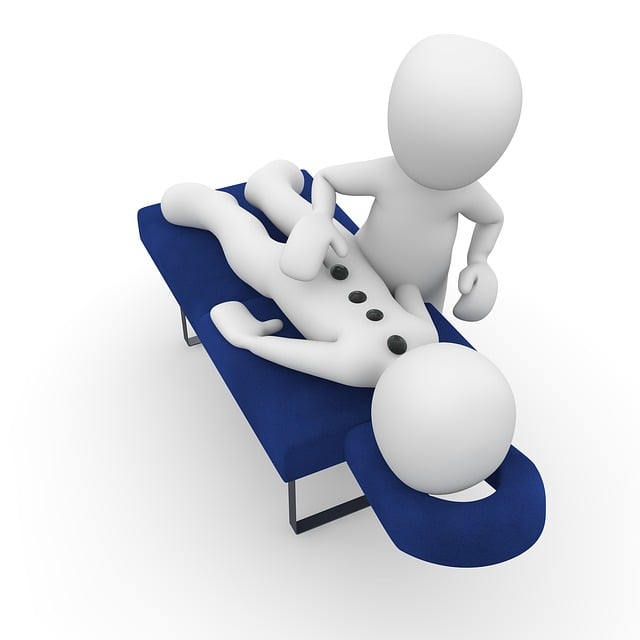Cold plunges, or ice baths, have been used for centuries for their potent calming effects on mind and body, with modern research backing up their benefits. These practices stimulate positive mental health responses by activating the stress response and releasing "feel-good" hormones. Regular cold exposure may reset the circadian rhythm, improving sleep patterns. In today's wellness landscape, cold plunges are gaining popularity in healthcare as a tool to reduce stress, alleviate anxiety, and enhance overall well-being. Incorporated into therapy sessions, they offer a holistic approach to mental health care. However, safety is crucial, especially for individuals with certain conditions, and sessions should be monitored and controlled.
Discover the power of cold plunges as a professional mental health care tool. This guide explores the historical roots and modern application of this therapeutic practice, highlighting its remarkable calming effects. From ancient rituals to contemporary treatments, we delve into the science behind cold therapy and its benefits for mental well-being. Learn how to safely integrate cold plunges into modern practices, offering clients innovative ways to manage stress and promote resilience.
Understanding Cold Plunges and Their Historical Use
Cold plunges, also known as cold baths or ice baths, have been used for centuries to harness the power of cold water for its potent calming effects on both the mind and body. This ancient practice involves submerging oneself in icy water, typically for a brief period, to stimulate various physiological responses. Historically, cold plunges have been employed by different cultures for healing, rejuvenation, and even as a ritualistic practice to enhance mental clarity and resilience.
The concept of using extreme cold as a therapeutic tool dates back to ancient civilizations like the Greeks and Romans, who believed in hydrotherapy. In modern times, with an increasing focus on holistic wellness, there’s a resurgence of interest in cold plunges for their potential calming effects on stress and anxiety. This practice has gained traction within the mental health care sphere as a complementary therapy, offering a natural way to regulate emotions and promote overall well-being.
The Science Behind Cold Therapy and Mental Health Benefits
The science behind cold therapy reveals that exposure to extreme cold temperatures can stimulate a range of positive mental health responses. Cold plunges, such as ice baths or cold showers, activate the body’s stress response by lowering core temperature. This triggers the release of norepinephrine and endorphins, often referred to as “feel-good” hormones, which can significantly enhance mood and reduce feelings of anxiety. The calming effects of cold plunges are also linked to the reduction of inflammation in the brain, a known contributor to many mental health conditions.
Additionally, cold therapy is believed to boost serotonin levels, contributing to an improved sense of well-being and better sleep patterns. Research suggests that regular exposure to cold may even help reset the body’s circadian rhythm, addressing common issues like seasonal affective disorder (SAD). The therapeutic benefits of cold plunges have gained recognition in both clinical settings and wellness practices, offering a simple yet powerful tool for individuals seeking support for their mental health and overall stress management.
Integrating Cold Plunges into Modern Mental Healthcare Practices
In today’s fast-paced world, mental health care is evolving to include innovative approaches that cater to diverse patient needs. One such emerging practice gaining traction is the integration of cold plunges as a therapeutic tool. Cold plunges, which involve brief exposure to cold temperatures, have been renowned for their calming effects on both mind and body. This ancient practice is now being revisited and incorporated into modern mental healthcare settings due to its potential to reduce stress, alleviate anxiety, and enhance overall well-being.
The incorporation of cold plunges offers a unique and natural way to support individuals struggling with mental health challenges. Research suggests that the cold temperature triggers a series of physiological responses, leading to increased release of endorphins and reduced levels of cortisol, often referred to as the stress hormone. This combination can create a profound sense of relaxation and emotional balance. By integrating cold plunges into therapy sessions or as adjunctive treatments, mental health professionals can provide patients with a holistic approach that not only addresses symptoms but also empowers them with self-care strategies for long-term mental resilience.
Best Practices and Safety Guidelines for Administering Cold Plunges
The practice of cold plunges, involving brief exposures to cold water or air, has gained recognition for its potential calming effects on mental health. When integrated into therapeutic routines, it can be a powerful tool for managing stress and anxiety. Best practices dictate that these sessions should be short—typically lasting between 10 and 30 seconds—and conducted in a controlled environment. Users should always enter the cold with a clear mind, focusing on their breath to maximize the therapeutic experience.
Safety is paramount; individuals with certain conditions like Raynaud’s disease or severe cardiovascular issues should avoid cold plunges altogether. It’s crucial to monitor participants’ physical responses during each session, looking for signs of discomfort or distress. Providing clear instructions and ensuring proper preparation are essential steps in creating a safe and beneficial environment for exploring the calming effects of cold plunges as part of mental health care.
Cold plunges, with their historical roots and growing scientific backing, offer a unique and potentially therapeutic approach to mental health care. By integrating this practice into modern treatments, professionals can harness the calming effects of cold therapy, providing clients with an innovative way to manage stress and enhance overall well-being. Following best practices and safety guidelines ensures a beneficial experience for all users, making cold plunges a promising addition to the mental healthcare landscape.
